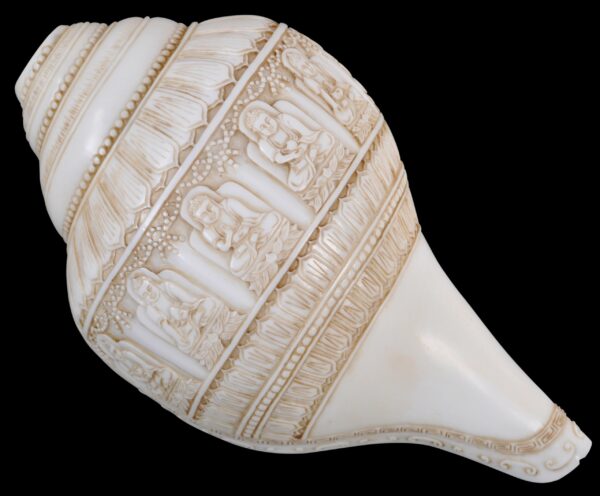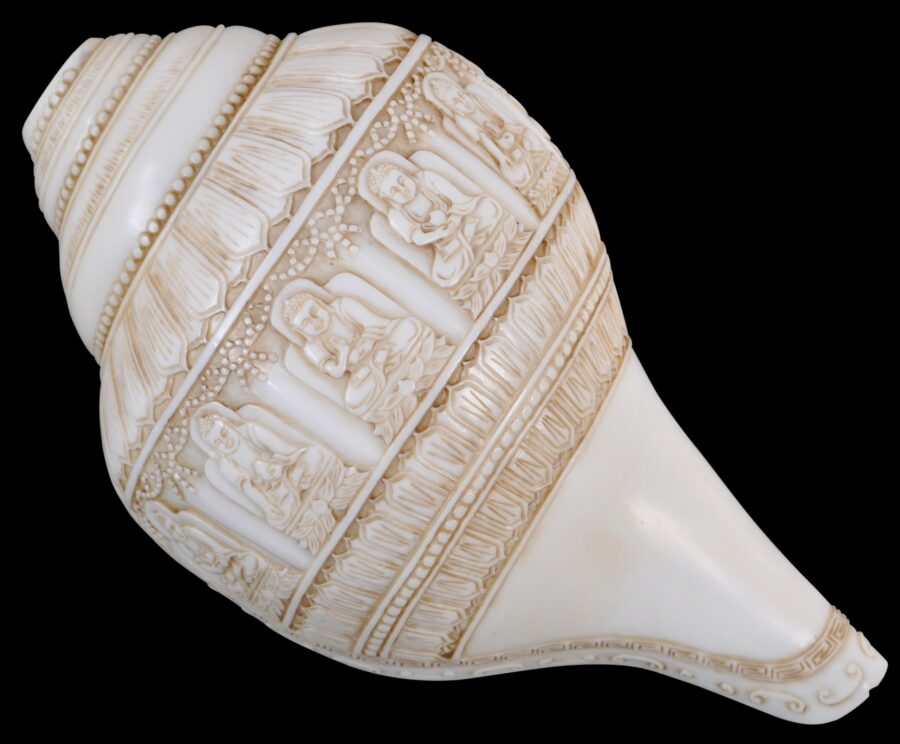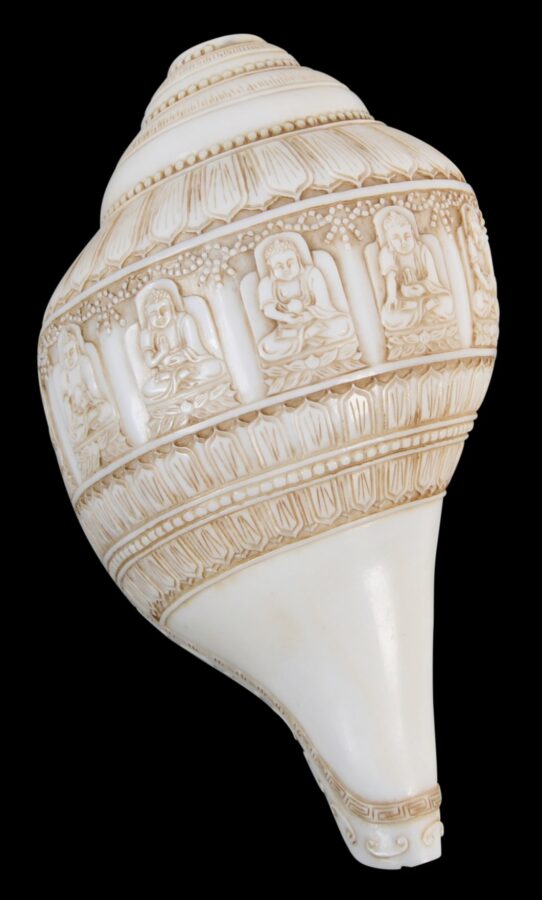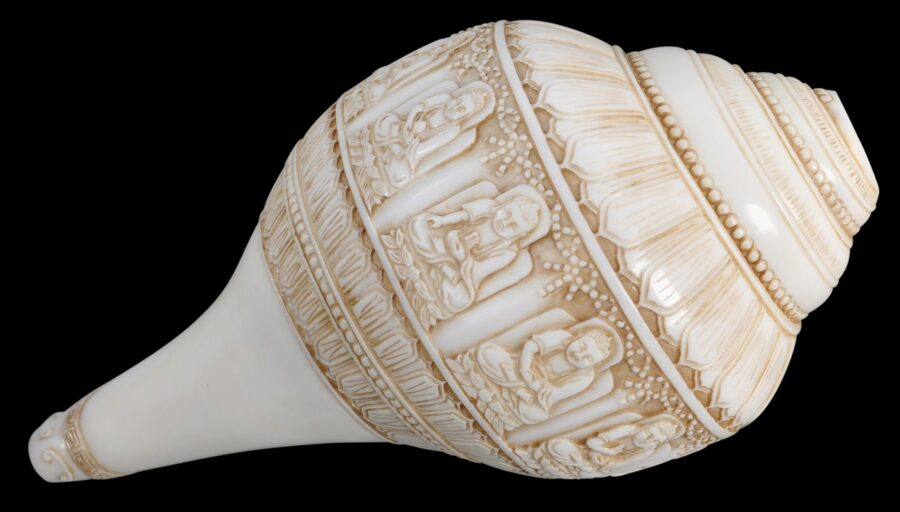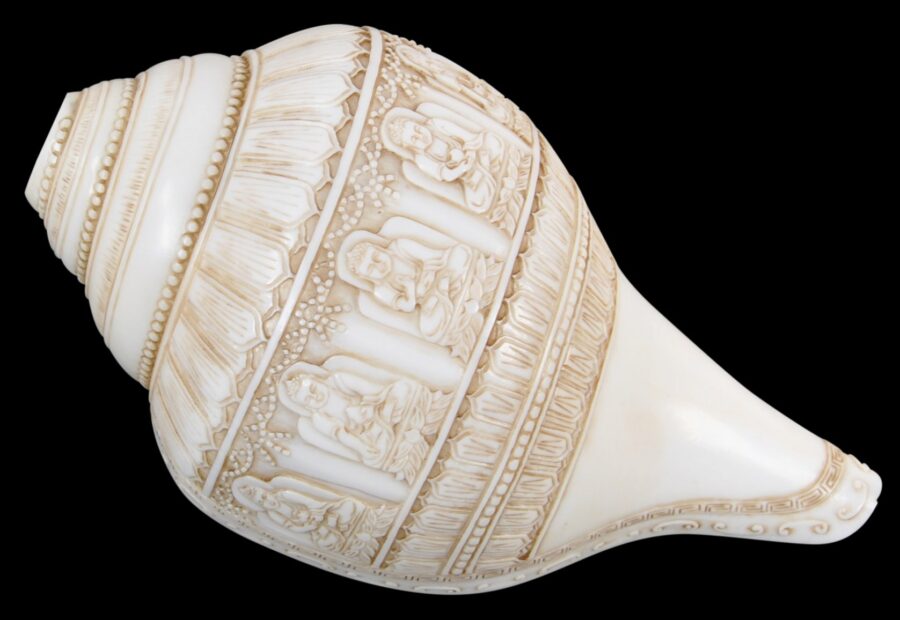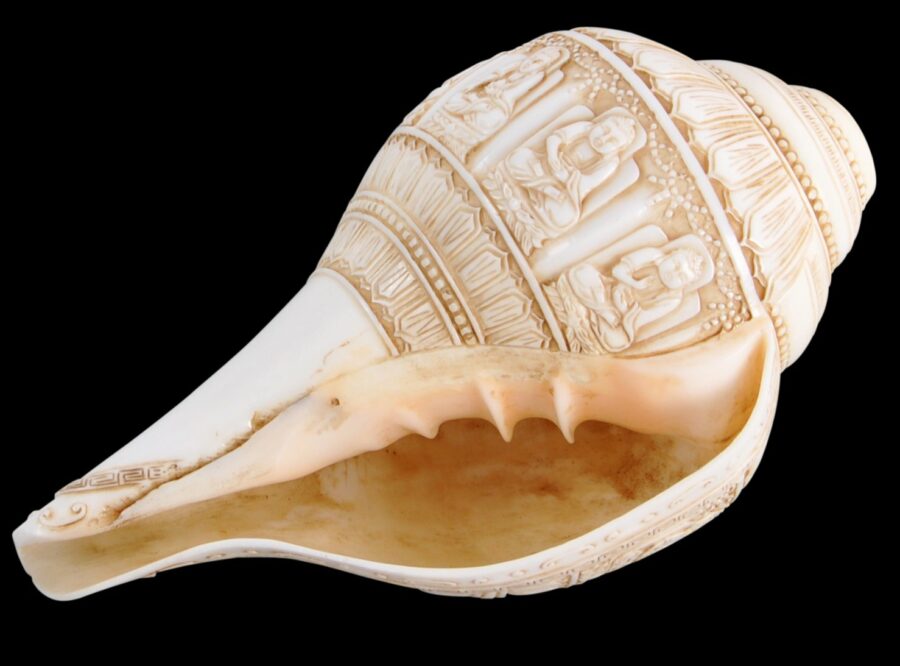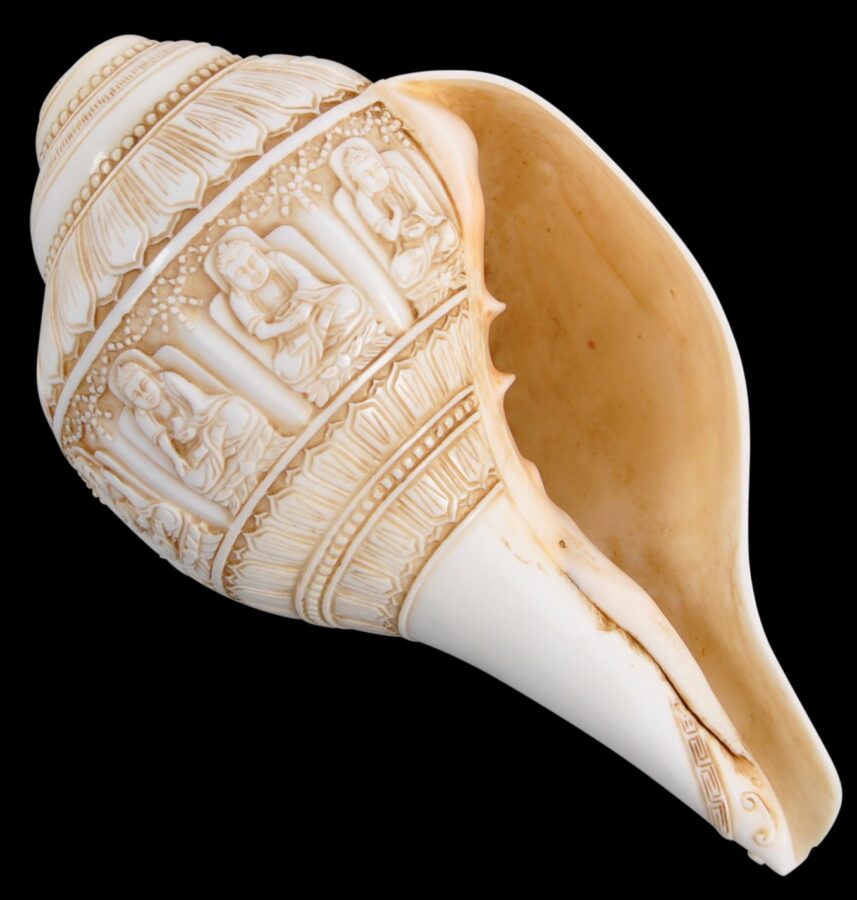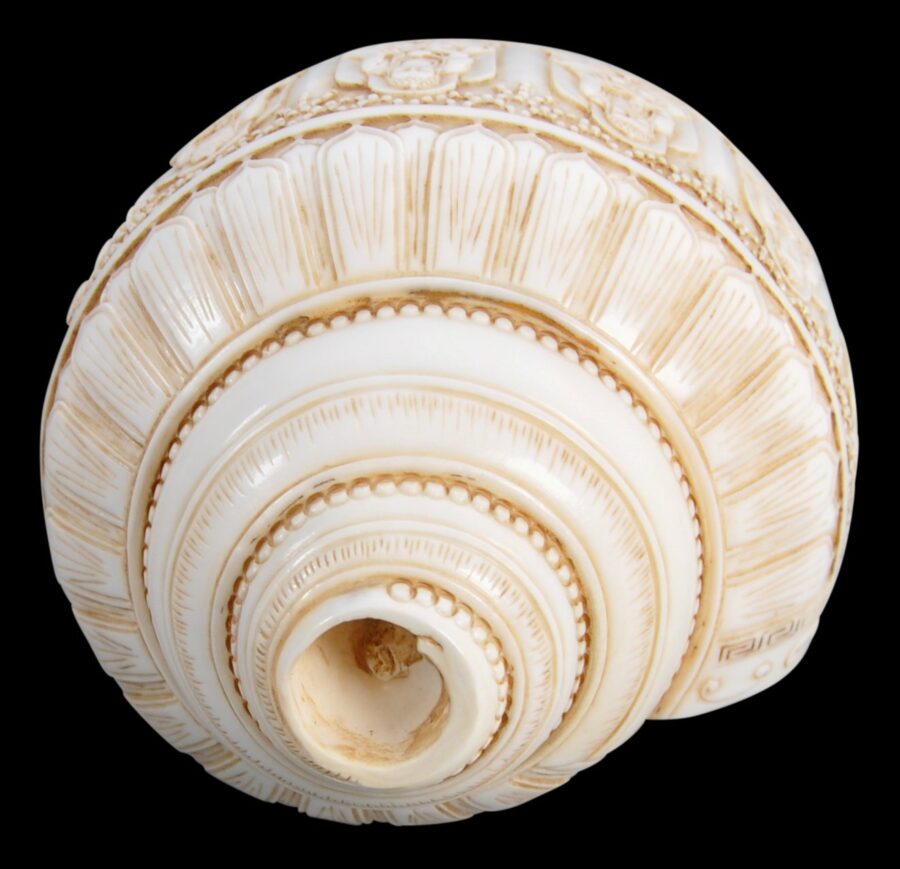This remarkable shell trumpet almost certainly has been produced in the same imperial workshops, most probably in Beijing, as a shell presented by Emperor Qianlong (r. 1736-1795) to the Dalai Lama and which has a dedicatory inscription inside attributed to the Qianlong Emperor.
The Qianlong shell, which is now in the Potala Palace Museum and illustrated in Shanghai Museum (2001, p. 136) and this example have the same carved format, though arguably our example is even more finely carved. Both have been carved extensively with a central band of seven Buddhas each sitting cross-legged and with various gestures. Each is seated on a lotus cushion, and strands of pearls are strung between them. The central band is bordered top and bottom by double lotus petal borders.
The shell, though most probably carved in Beijing, shows obvious Tibetan influence. The Qing dynasty emperors especially were influenced by Tibetan and particularly Gelugpa teachings. Often several Tibetan lamas were found at Court, and over time, there were as many as one hundred Tibetan Buddhist monasteries and temples in Beijing occupied by lamas from Tibet, Mongolia and China.
Such shells usually are referred to as conch trumpets but the shells used are not conch shells but chank shells (Turbinella pyrum). The shell has been converted into a trumpet or horn with the removal of the end of the point to provide a blowing hole.
Such shells are important ritual objects in Tibetan Buddhism. They are used as ceremonial trumpets in prayer rituals, to summon monks to prayer, to summon spirits as well, and to invoke rain and water (Reynolds, 1978, p. 80.)
The carving on the example here has been worn smooth from handling and age. The patina and age are clear. It is a remarkable item.
References
Lama, M.N. Ritual Objects & Deities: An Iconography on Buddhism & Hinduism, Lama Art, 2003.
Lipton, B., & N.D. Ragnubs, Treasures of Tibetan Art: Collections of the Jacques Marchais Museum of Tibetan Art, Oxford University Press, 1996.
Reynolds, V., Tibet: A Lost World: The Newark Museum Collection of Tibetan Art and Ethnology, The American Federation of Arts, 1978.
Shanghai Museum, Treasures from Snow Mountains: Gems of Tibetan Cultural Relics, Shanghai Museum, 2001.


